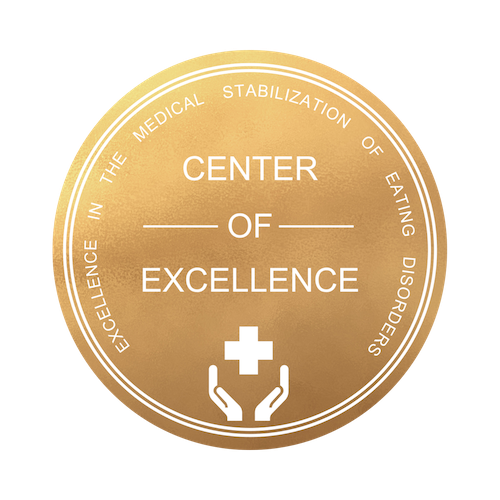Bradycardia in Eating Disorders: How Low is Too Low?
Low Heart Rate in Eating Disorders
Although suicide contributes to the mortality in patients with eating disorders, and medical complications of malnutrition contribute to the increased mortality, the exact cause of sudden death in this population is unclear. It is likely, though, that bradyarrhythmias do contribute to sudden death in this population.
Bradycardia: The Most Common Complication
Bradycardia is the most common medical complication in patients with anorexia nervosa, potentially affecting up to 95% of patients. Bradycardia is an abnormally low heart rate, including any heartbeat under 60 beats per minute (bpm). A normal heart rate ranges from 60-100 bpm. Bradycardia typically occurs alongside substantial weight loss. While bradycardia is most common in individuals who are severely underweight, it also occurs in those who are not underweight, such as adolescents with atypical anorexia nervosa (A-AN).
Bradycardia can cause a variety of symptoms, including:
- Fatigue
- Dizziness or lightheadedness
- Shortness of breath
- Chest discomfort
- Syncope (passing out)
- And more sinister arrhythmias in severe situations!
However, many patients will not feel any symptoms from their bradycardia, highlighting the need for healthcare professionals to evaluate patients at risk for this serious complication.
Link with Hypotension (Low Blood Pressure)
Bradycardia is often linked with hypotension. A weakened heart from prolonged malnutrition struggles to pump blood throughout the body, resulting in low blood pressure. The compensatory reduced metabolic needs also contribute to the low blood pressure observed in the malnourished person. Patients with abnormally low blood pressure can experience:
- Dizziness
- Nausea
- Fatigue
- Blurred vision
- Cold or clammy skin
- Confusion
- Tachycardia (elevated heart rate)
Causes of Bradycardia
The cause of bradycardia in those with eating disorders may be related to increased vagal tone and as an adaptive response to the energy deficit but this is unclear as not all studies have found an increased parasympathetic tone. The parasympathetic nervous system slows the heart in an attempt to conserve energy and keep the rest of the body functioning normally. As the heart rate slows down, the heart is unable to pump oxygen-rich blood back to the body, causing many of the symptoms of bradycardia.
Bradycardia Versus an Athletic Heart
Individuals with a severe eating disorder may already be aware of their low heart rate, and some may attribute it to having an “athletic heart.” While they may be exercising frequently, and may even be performing at a higher athletic level, a bradycardic heart and an athletic heart are different. The low heart rate of an eating disorder patient is not the result of athletic conditioning, but rather their malnourished state.
One way to distinguish between the two is to ask patients to mildly exert themselves. Patients with bradycardia secondary to malnutrition will show an abnormally elevated heart rate (tachycardia) with minimal activity, such as walking across the room or standing up from a lying position, while this significant compensatory response is not seen with athletic hearts. Additionally, ultrasound imaging of the heart in the setting of malnutrition reveals small, thin cardiac chambers versus this lack of cardiac atrophy seen in athletes.
Unfortunately, few medical providers are well-trained in understanding eating disorders, and take the explanation of an “athletic heart” at face value. When combined with other symptoms of an eating disorder, bradycardia warrants further evaluation.
How Low is Too Low?
It can be difficult to determine whether a low heart rate is worthy of monitoring or if it requires immediate attention. Without doubt, heart rates of less than 40 bpm (or 45 bpm for adolescents) require hospital admission and cardiac monitoring per the 2023 American Psychiatric Association Practice Guidelines for the Treatment of Patients with Eating Disorders.
- Under 60 bpm: A heart rate of under 60 bpm is considered slower than normal for most adults, although athletic adults and young adults may experience a resting heartbeat of under 60 bpm that drops even lower during sleep. If an individual with an eating disorder has a heart rate under 60 bpm, an evaluation may be warranted, even without obvious cardiac symptoms.
- Under 50 bpm: A heart rate below 50 bpm is more likely to grab a physician’s attention as a cause for concern. However, some healthy, active adults have heart rates under 50 bpm, particularly endurance athletes. When an individual of low body weight or with a documented eating disorder has a heart rate lower than 50 bpm, further discussion is warranted.
- Under 40 bpm: A heart rate under 40 bpm is most likely a cause for concern in malnourished individuals. The American Psychiatric Association recommends that individuals with eating disorders, who have a heart rate lower than 40 bpm (or 45 bpm for adolescents), be admitted to hospital for assessment and treatment.
Treatment for Bradycardia
Thankfully, bradycardia, low blood pressure and most other complications associated with anorexia are reversible with medically-supervised nutritional rehabilitation and weight restoration.
Weight Restoring & Refeeding Patients with Bradycardia
Patients with anorexia nervosa experiencing severe bradycardia and/or hypotension should be hospitalized for cardiac monitoring and medical stabilization. At this stage, the patient is likely experiencing other serious medical complications related to their eating disorder, and medical stabilization in a specialized inpatient medical setting may be necessary prior to entering an eating disorder treatment program.
Once a patient with severe anorexia nervosa and bradycardia arrives to the hospital, a refeeding protocol may be initiated to begin nutritional rehabilitation and weight restoration.
Monitoring Blood Chemistry Values
Since a variety of fluid and electrolyte abnormalities can accompany the refeeding process and cause further cardiac complications if not appropriately treated, it is important to monitor electrolytes, blood counts and glucose values very closely. Thiamin (vitamin B1) should be supplemented before initiating nutrition to help minimize risk of refeeding syndrome, which can further impact cardiac function. Frequency of monitoring can be reduced as patients stabilize, but this is best determined by a professional. Monitoring phosphorous levels is particularly important since hypophosphatemia is a leading factor in the development of refeeding syndrome, a potentially deadly medical complication that occurs alongside refeeding.
Other minerals/electrolytes and vitals to monitor include:
- Potassium
- Magnesium
- Glucose
- Hemoglobin
- Heart rate
- Blood pressure
Cardiac Monitoring (Telemetry)
Severe cardiac complications necessitate treatment at a medical stabilization unit where patients require close monitoring and refeeding, minimizing the risk of complications of refeeding syndrome and monitoring existing medical complications. Unlike residential treatment programs for eating disorders, medical stabilization programs have the telemetry support needed to assess symptom progression and improvement, as well as same-day lab results that are used to monitor key electrolyte levels affecting the functioning of the heart.
Compared to standard hospital units, specialized eating disorder medical stabilization units have the expertise to understand, monitor, and intervene on the medical complications of malnutrition, including refeeding syndrome and other cardiovascular complications such as pericardial effusion orthostatic hypotension. Medical stabilization units also provide a breadth of other eating disorder levels of care, preparing patients to continue their journey to recovery.
In terms of medications, inotropic drugs (drugs that increase the contractile strength of the heart) should be avoided due to the risk of ventricular arrhythmias and due to the fact that the cardiac pathophysiology is related to malnutrition and normalizes with nutritional rehabilitation. In general, medications should be avoided to treat the bradycardia since this normalizes with nutritional rehabilitation
Continuing Treatment in Lower Levels of Care
Once the patient has achieved medical stability, they can be discharged to a 24-hour care facility where they can continue their eating disorder recovery through intensive psychotherapy, ongoing weight restoration and other evidence-based interventions.
Resources
- Mehler PS, Watters A, Joiner T, Krantz MJ. What accounts for the high mortality of anorexia nervosa? Int J Eat Disord 2022;55:633-6.
- Sachs K, Harnke B, Mehler PS, Krantz MJ. Cardiovascular complications of anorexia nervosa: A systematic review. Int J Eat Disord 2016;49(3):238-48.
- Westmoreland P, Duffy A, Rienecke R, et al. Causes of death in patients with a history of severe anorexia nervosa. J Eat Disord 2022;10:200.
- Yahalom M, Spitz M, Sandler L, et al. The significance of bradycardia in anorexia nervosa. Int J Angiol 2013;22:83-94.
Last Reviewed: November 2023 by Dennis Gibson, MD, FACP, CEDS

